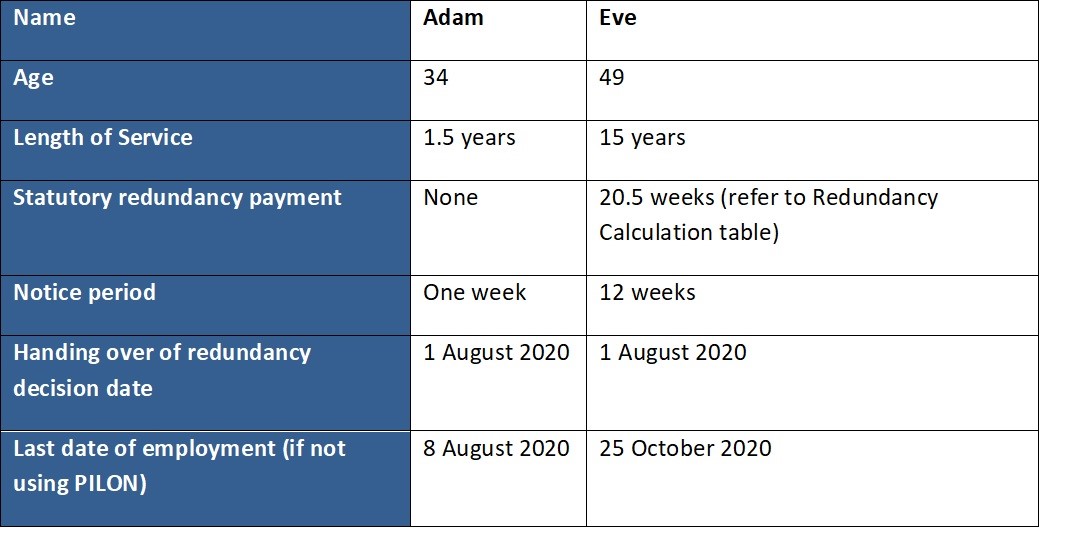Your Rights to Redundancy If Company Goes Bust: UK Employee Protections
Investigating the Interaction Between Firm Redundancy and Organizational Flexibility for Future Growth
In the dynamic landscape these days's business globe, the elaborate relationship in between company redundancy and business adaptability becomes an essential variable for sustained development and success. Companies commonly face the difficulty of striking a fragile balance in between maintaining a degree of redundancy to mitigate risks and fostering flexibility to react quickly to the ever-evolving market demands. This fragile interaction holds the essential to not just surviving in rough times yet also prospering in the face of uncertainty. As we check out the complex dimensions of this interplay, appealing understandings right into how organizations navigate these intricacies to lead the way for future growth await.
Significance of Business Redundancy
Business redundancy is an important aspect that improves organizational durability and reduces operational risks. By incorporating redundancy measures within the organizational structure, firms can much better stand up to unpredicted disturbances and variations in the organization atmosphere. Redundancy functions as a tactical buffer, allowing firms to adjust and respond efficiently to unexpected obstacles without endangering crucial procedures.
One secret aspect of the importance of company redundancy is its duty in making sure continuity during times of crisis. When confronted with abrupt adjustments or emergencies, redundant systems, sources, or workers can action in to maintain crucial features and stop extensive disruptions. This connection not just safeguards the business's credibility and customer trust fund yet additionally decreases monetary losses and operational downtime.

Methods for Business Adaptability

Creating adaptable business structures that allow for quick adjustments to market characteristics and consumer requirements is vital for staying affordable in a quickly progressing environment. By proactively identifying possible interruptions and opportunities, companies can proactively thrive and adjust in an ever-changing company landscape.
Balancing Redundancy and Flexibility
Accomplishing an unified equilibrium between functional redundancy and business adaptability is critical in browsing the intricacies of a vibrant company atmosphere. Striking the appropriate balance between redundancy and versatility is a fragile process that needs a deep understanding of the company's objectives, sector dynamics, and risk tolerance.
To attain this equilibrium, firms require to conduct routine evaluations of their operations to identify areas where redundancy is necessary for risk reduction and where flexibility can drive technology and development. Carrying out versatile structures, fostering a culture of continual understanding and renovation, and urging open communication across all levels of the company are crucial methods to balance redundancy and adaptability properly. By aligning these 2 vital components, companies can position themselves for lasting growth and success in an ever-changing organization landscape.
Study on Adjustment Success
In checking out circumstances of successful organizational adaptation, it comes to be noticeable that the interplay in between functional redundancy and flexibility is a defining factor in forming resistant organizations. One engaging case study is that of Netflix. At first a DVD rental service, Netflix demonstrated amazing versatility by transitioning into a streaming system when digitalization disrupted the market. By tactically buying innovation and material creation, Netflix not just made it through however grew in a quickly progressing market. One more standout example is Amazon. Beginning as an on the internet book shop, Amazon continuously adjusted its organization model, expanding into diverse markets such as cloud computer and man-made knowledge. This versatility allowed Amazon to stay Continued in advance of rivals and fulfill changing customer demands. Lastly, Adobe gives a notable image of successful adaptation. The firm changed from selling software application licenses to a subscription-based version, ensuring persisting earnings streams and enhanced client interaction. These study underscore the relevance of functional redundancy paired with business adaptability in fostering long-term growth and competitiveness.
Structure Durability for Future Growth
Building strength for future growth calls for a tactical placement of operational procedures with market dynamics and arising trends. Firms should adjust to changing settings by fostering a society of flexibility, advancement, and continuous enhancement.
Moreover, promoting solid relationships with stakeholders, such as clients, employees, vendors, and the community, is crucial for maintaining and weathering unpredictabilities trust and support throughout turbulent times. have a peek at this site Efficient interaction and transparency play a crucial role in building strength, as they assist straighten expectations and help with cooperation in navigating uncertainties.
Moreover, companies need to prioritize discovering and growth initiatives to upskill workers and outfit them with the necessary tools to adapt to transforming circumstances. By purchasing their labor force, firms can enhance their adaptability and dexterity, inevitably strengthening their durability for lasting future development.
Conclusion

In the dynamic landscape of today's service globe, the elaborate connection in between company redundancy and organizational flexibility arises as an important variable for sustained growth and success. Business usually face the difficulty of striking a fragile equilibrium in between maintaining a level of redundancy to minimize threats and fostering versatility to react promptly to the ever-evolving market needs.To attain this balance, companies need to carry out routine analyses of their procedures to recognize areas where redundancy is required for danger mitigation and where versatility can drive advancement and development.In verdict, the interaction in between firm redundancy and business flexibility is critical for future growth. Structure strength via visit the site a mix of redundancy and flexibility will certainly make certain that firms are prepared for the obstacles of the future.